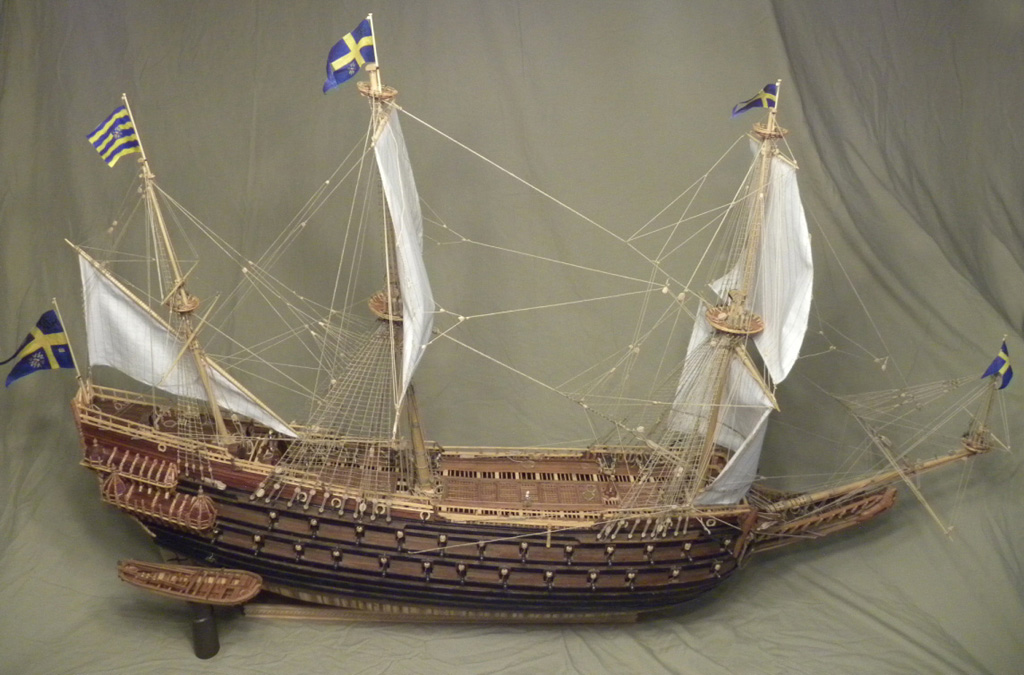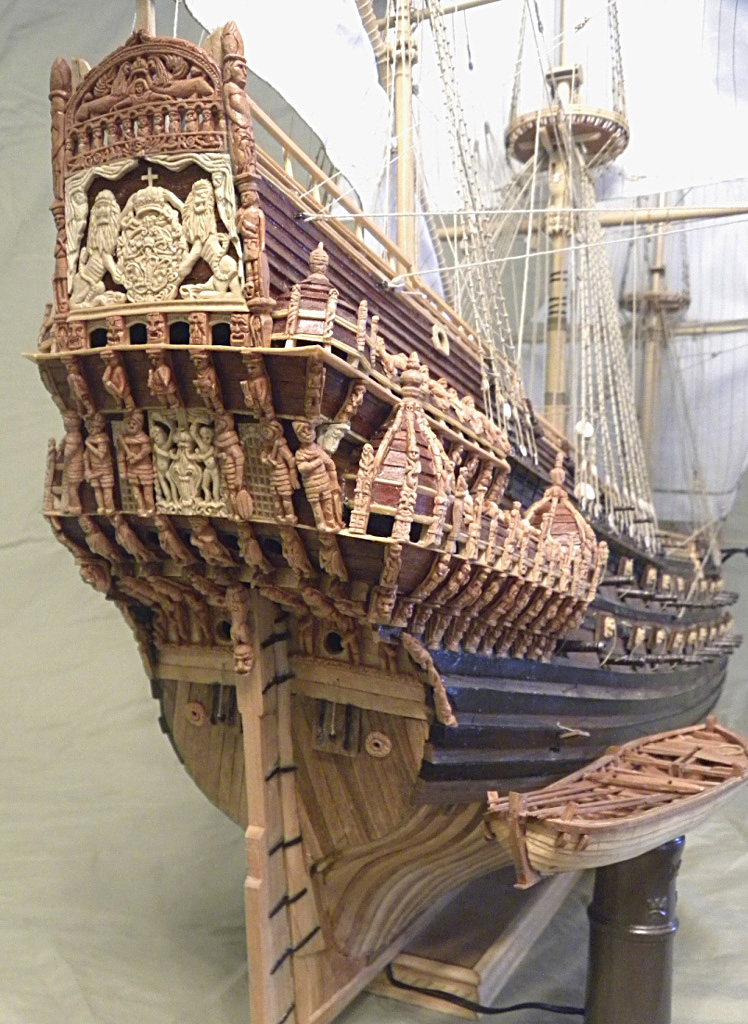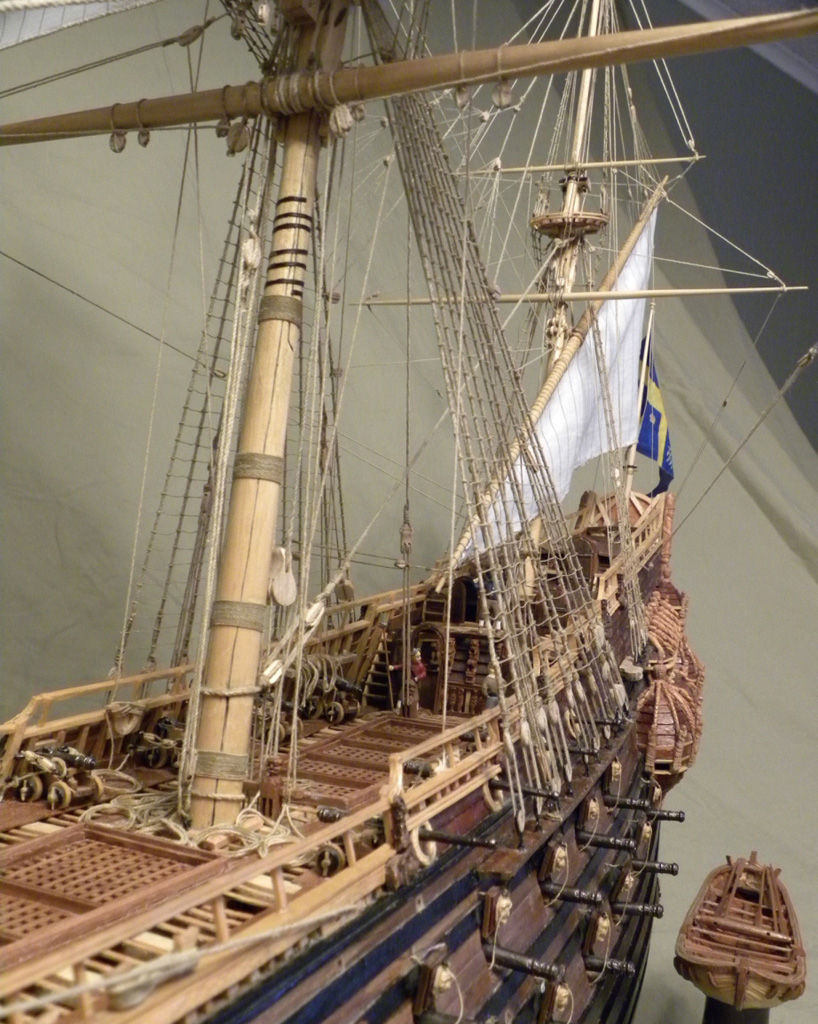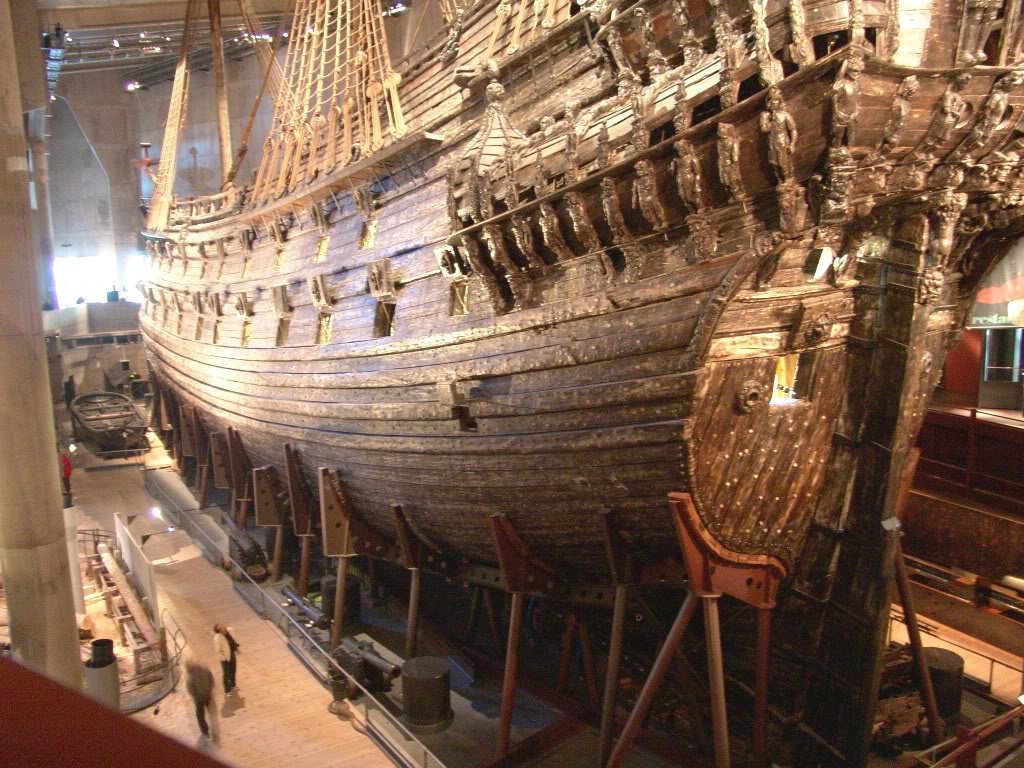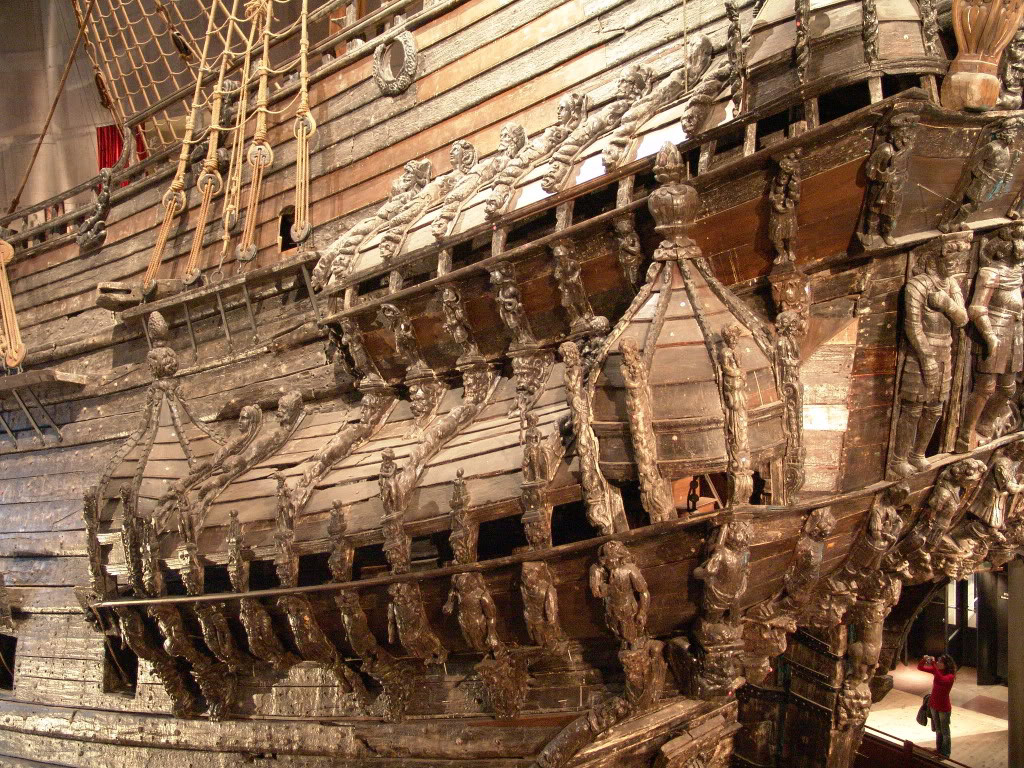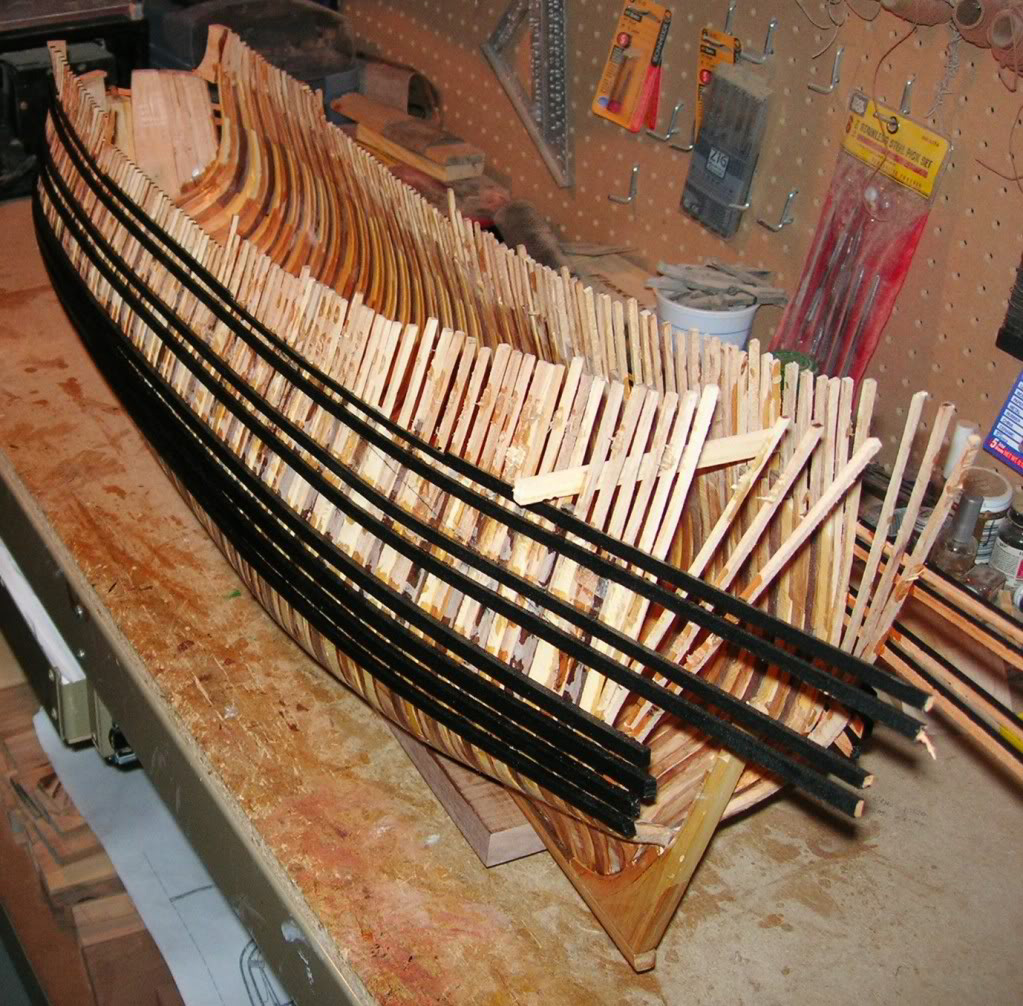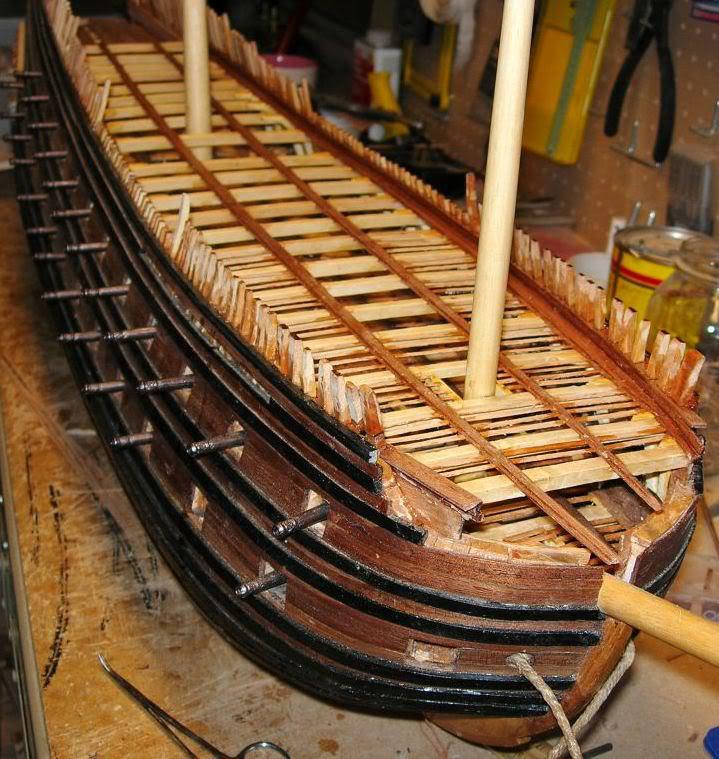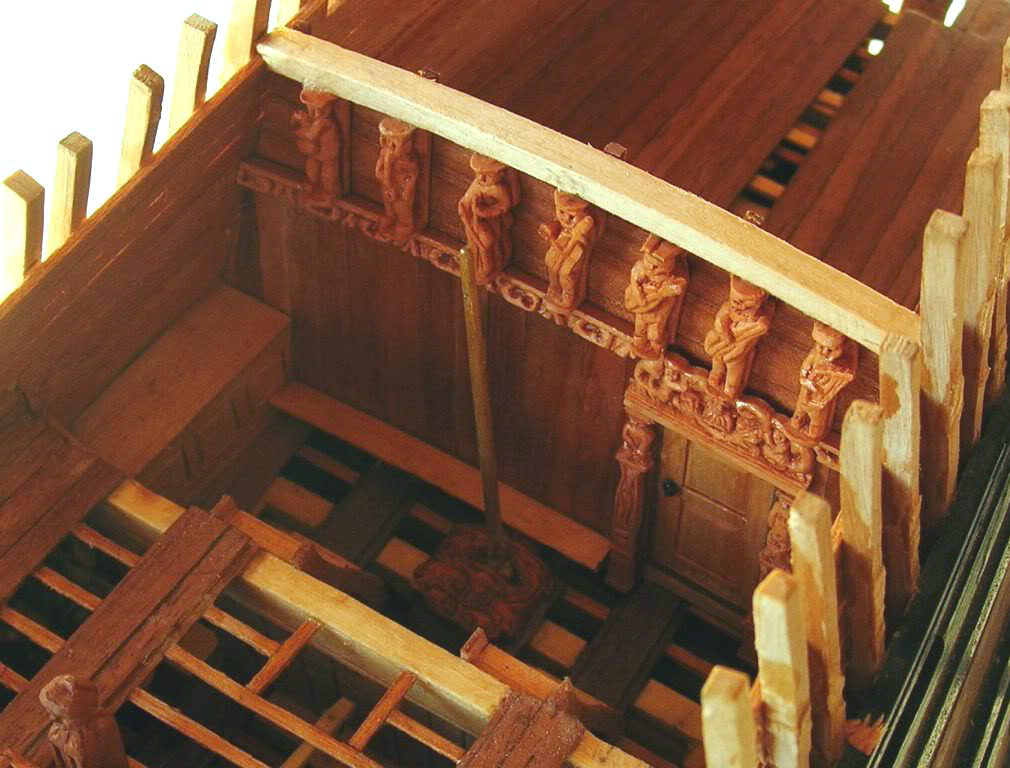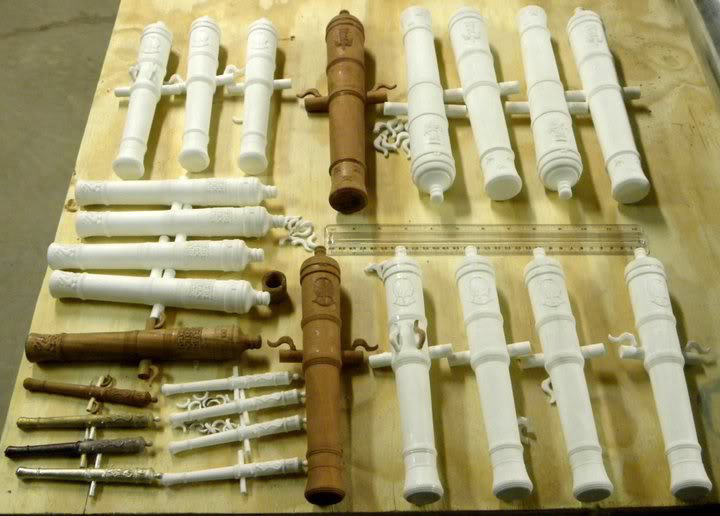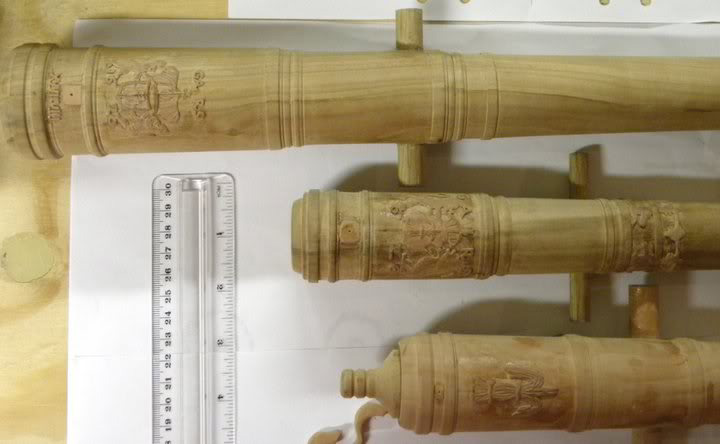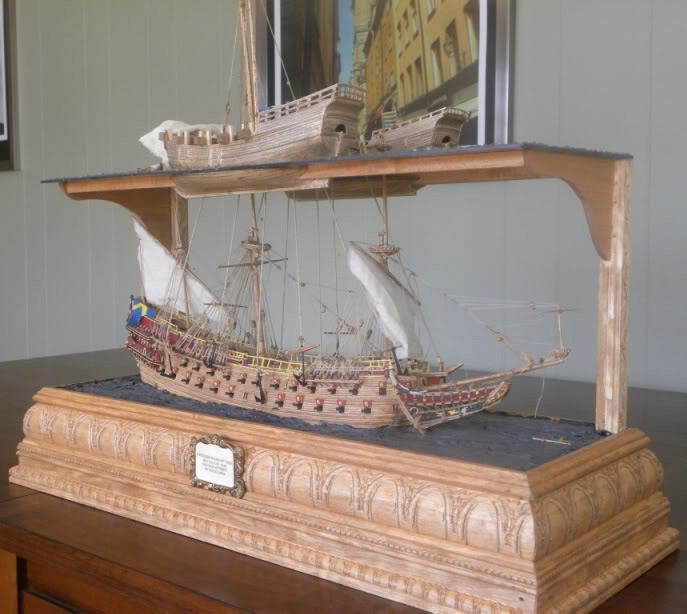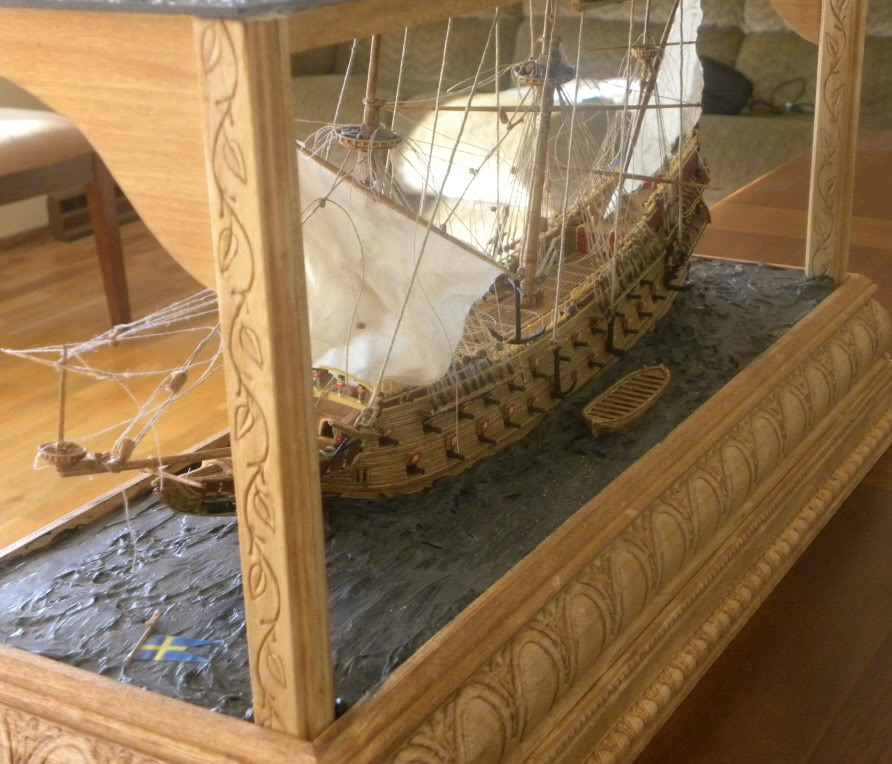An Ornate Wooden Ship Model Brings Out a Talent for Carving
Introduction
In 2014, Clayton Johnson sent some photos of his work to the Miniature Engineering Craftsmanship Museum. We felt that the historical research put into his projects, along with the quality of the ship models themselves, was well worth including here. In 2005, Clayton started building a model of a Swedish warship that sank in 1628. The Vasa represents one of the most powerful ships from an era when warships of this type were far from plain. The basic shapes were artful, and almost every post and vacant space on the ship could be decorated with carved figures. It turned out that Clayton had picked the perfect ship building project to bring out his talents as a wood carver.
Now, this particular ship had a tragic history. It sank in Stockholm Harbor on its maiden voyage, a victim of instability in a time when scientific naval construction had not yet been fully refined. However, the Vasa sank in protected waters with great conditions for preservation. The silt on the bottom of the harbor, along with colder water and lower salinity, protected the sunken hull from wood eating organisms for centuries. Eventually, the ship was raised and restored starting in the 1960’s. The original ship is now on display in the Vasa Museum in Stockholm, and receives over 1 million visitors a year.
Interestingly, Clayton has built more than one model of the Vasa. He built a 1/144 scale model of the ship in its sunken state on the bottom of the harbor, with a salvage barge hovering above to recover goods. Then, Clayton built a 1/50 scale model of the ship alone.
Along with the two full ships, Clayton also contributed scale cannons, and associated block and tackle for the 1/10 scale model that belongs to the Vasa museum. Clayton’s models go beyond mere appearances, though.
In fact, his historical research on how the ship was originally built, and the accuracy of his models, has been consulted by museum research staff. For his work, Clayton is now an honored guest at the Vasa Museum. Some of Clayton’s other interests include making vintage black powder rifles, and doing ornate wood carving of all kinds. His chosen carving subjects include animals, fish, and ornate interwoven designs in the Moorish and Norse styles.
Notice the intricately carved decoration on the stern. This 1/50 scale model ship took eight years to complete.
Autobiography
By Clayton Johnson
I was born in September of 1979, at the Portsmouth Naval Hospital in the U.S. state of Virginia, to a stay-at-home mother and a father who was enlisted in the U.S. Navy at the time. When I was very young my father was discharged from the service, and they moved back to my mother’s hometown of Wrenshall, in northern Minnesota, near Duluth.
My grandfather was in the U.S. Navy as well, so there were always books laying around that were nautical in nature. One of these books was a compilation of nautically related National Geographic articles, and one of the articles was on the Swedish warship, Vasa.
The original warship sits in the Vasa Museum after initial restoration. The restoration process has been underway since the early 1960’s, and the ship will continue to dry for decades to come.
Hard Work on the Family Farm
My parents had two more children, both girls, and started something of a hobby farm (even though they took it very seriously) near Wrenshall. They farmed partially in a very old fashioned way; with draft horses and turn of the 19th century (or older) farm equipment. It was much like the Amish live now. All the while, my father held down a job as a boiler operator/mechanic at a nearby waste water treatment facility.
Most of the time we basically had nothing in terms of money, largely because of my parents’ heavy investment in their farm. One thing that my parents did teach me, however, was how to work. Even though I always thought that some of the things that they chose to put their efforts into were quite low in benefit return, considering the incredibly hard physical work, and massive amounts of time involved.
The scale Vasa hull during early construction. Clayton built the ship just as the original had been constructed.
College Education Leads to Strong Job Opportunities
I received my high school education at Wrenshall High School. It was a very small institution with grades K-12 in the same basic building, and an average class size was something around 25 to 35 students. During my senior year, I elected to use the PSEO (Post Secondary Enrollment Option) which was an option for motivated high school students to go to college early on the state’s dime. For this I went to a local community college in a nearby town called Cloquet. (FDLTCC)
While I was at the community college, I got involved in work study with the environmental department. This eventually led to a regular Federal job as a Soil Conservationist Trainee with the USDA-NRCS for a summer. While still attending the community college at age 19, I ended up landing a $25,000 scholarship agreement with the USDA-NRCS. This would pay for the rest of my school if I focused my studies on soil science.
That would also guarantee me a job with the Federal government in soil survey (one of the natural resources inventory branches of the USDA-NRCS) when I was done with school, for as many years as they paid for my school. Even though I was only 19 at the time, I saw it as an incredibly good deal. Especially considering that I did not come from a family with means. I saw it as an opportunity that I would probably never see the likes of again, so I happily took it.
At about the same time my father was getting very ill, and so I also saw that I needed to reduce my dependence on my family as much and as soon as possible. Further, I found this field of study more and more interesting as I got into it. I continued at the community college in Cloquet until most of my generals were complete, and I had received an Associates in Science degree in 2000.
Graduation, Marriage, and Starting a First Job
While at the University of Minnesota, I met my future wife, Amy in an elective class that neither of us really needed to take. Our relationship started partially because of the prodding of a sorority girl who thought we should date. I graduated from the University of Minnesota in 2002, earning an environmental science degree with a minor in soils.
I started my work as a mapper in St. Louis County, Minnesota (out of an office in Duluth) and continued that work for 5 years. It was very interesting, but both mentally and physically challenging. The job required going into places in the woods that not many people go to, and making decisions based on landforms, geology, and soils at the same time. I married Amy in 2004 and we have been together since. While we lived in Duluth, Amy successfully pursued a career as a Surgical Technician, a profession in which she still works.
In late 2007, I got promoted to project leader in Pine County, Minnesota. I spent about two years in Pine, and all the while was amazed at the geological variability in the surficial glacial deposits there. It is an area of a little less than 1 million acres (which is small compared to the approx. 5 million of St. Louis), and contains examples of most glacial landforms that can be found in northern Minnesota.
While Pine was interesting, there wasn’t much there for people/industry, etc. and Amy had a hard time finding employment. So, in 2010 I applied for an MLRA (Major Land Resource Area) leader job in Albert Lea, Minnesota. This was another promotion, and a job that I would likely have in that location for a long, long time—if not the rest of my career.
Clayton also built and donated cannons for the large 1/10 scale Vasa model that’s on display in the Vasa Museum in Stockholm. Some are shown here during construction.
Ship Model Leads to Association With Museum
Besides my career exploits, another set of achievements that I have been very proud of are my hobbies. In 2005, I began work on a miniature representation of the Swedish warship Vasa. This project lasted until August of 2012, and has received the praise of the Director of Research at the Vasa Museum in Stockholm, Sweden as “the most accurate in the world.”
The model has been displayed at the American Swedish Institute in Minneapolis, and Gustavus Adolphus college in St. Peter, Minnesota. Some preliminary talk has occurred on the subject of displaying it at the Vasa Museum.
Shortly after it sank, a salvage attempt was made to raise the Vasa, but it was unsuccessful. Four large anchors were attached to the sunken ship. The barges above were partially filled with water, and the anchor ropes tightened. Then, the water was was pumped out of the barges raising the ship. It was brought to shallower water and the process repeated. In that manner, the ship was moved from the harbor entrance, but not fully recovered. Clayton built a 1/144 scale model of the operation in miniature, which is shown here.
It wasn’t until the mid-17th century, when the invention of the diving bell made it to Sweden, that the bronze cannons were actually recovered. At that time, divers chopped through the decks to retrieve the cannons and were able to raise them. However, a lot of damage was done to the decks, which had to be restored later when the ship was rediscovered in the 1950s. The Vasa was eventually brought up from the bottom in the 1960s.
Ship Project Provides an Introduction to Woodworking
Because of my Vasa project, I found I could carve sculptures in wood, and have completed some large pieces. Some of them include a couple of half to full scale Vasa sculptures, a sculpture of the warhorse of Gustavus Adolphus, some necklace pendants, decorative spoons, and others.
I have found that I also enjoy building historic firearms. My first was a British Baker rifle, which was the first government issued military rifle in history, and used by the British army from 1800 until the late 1830’s.
Another firearm that I have done is a matchlock musket that I built after one from Vasa, and carved my own stock for. We now have a son, and I also enjoy making wooden toys for him in addition to my other projects.
—Clayton Johnson
View more photos of Clayton Johnson’s Vasa models and other wood carving projects.


